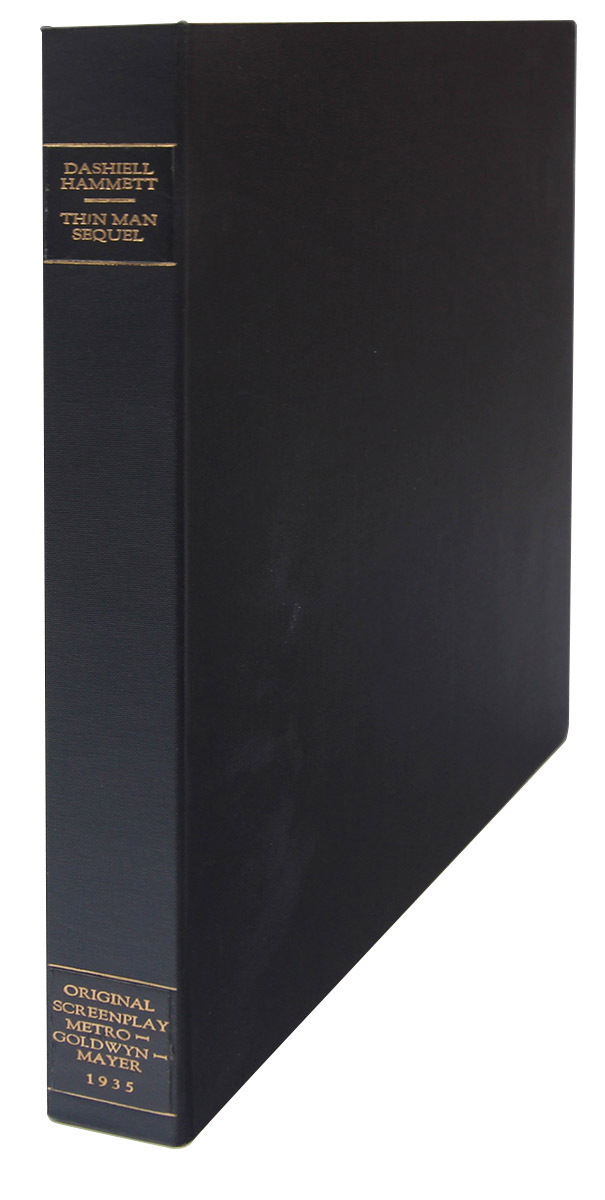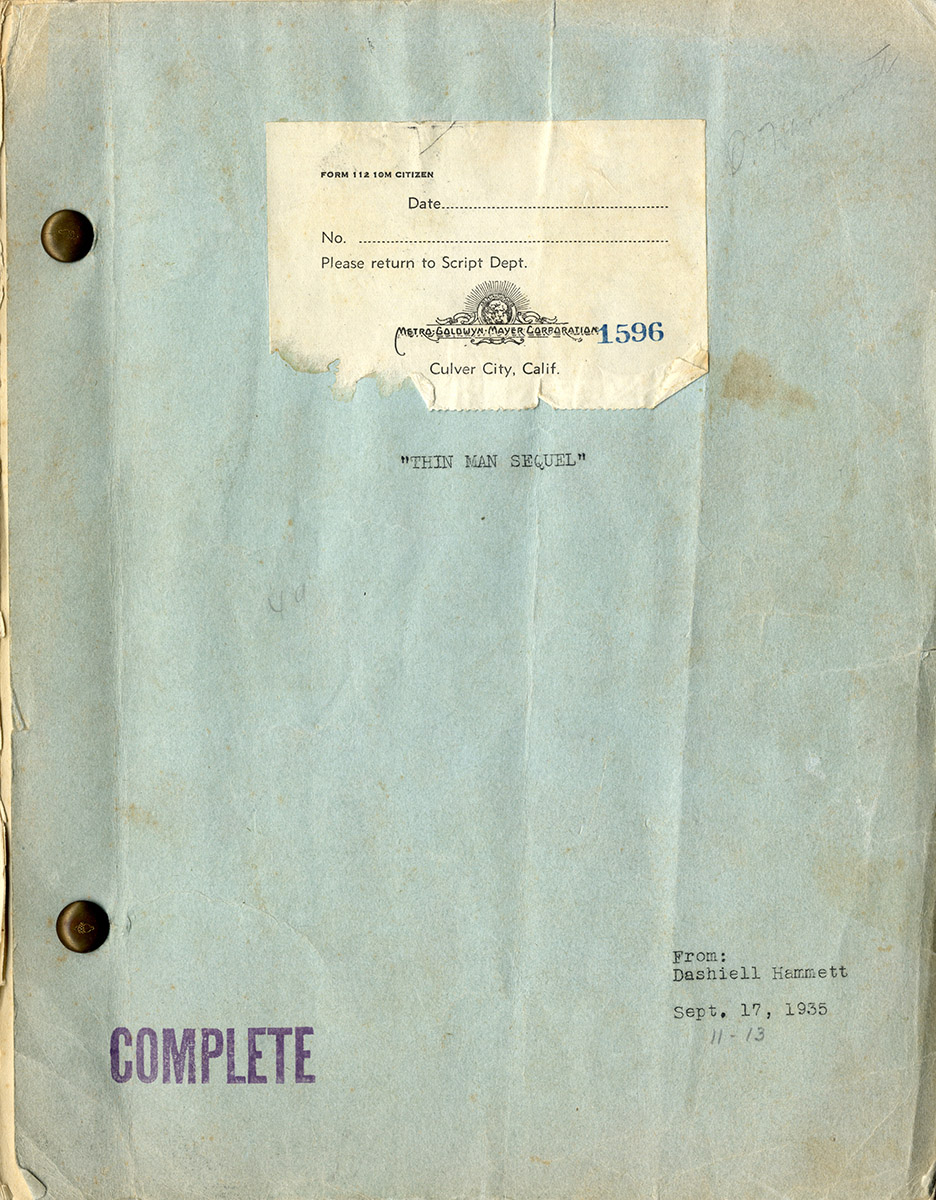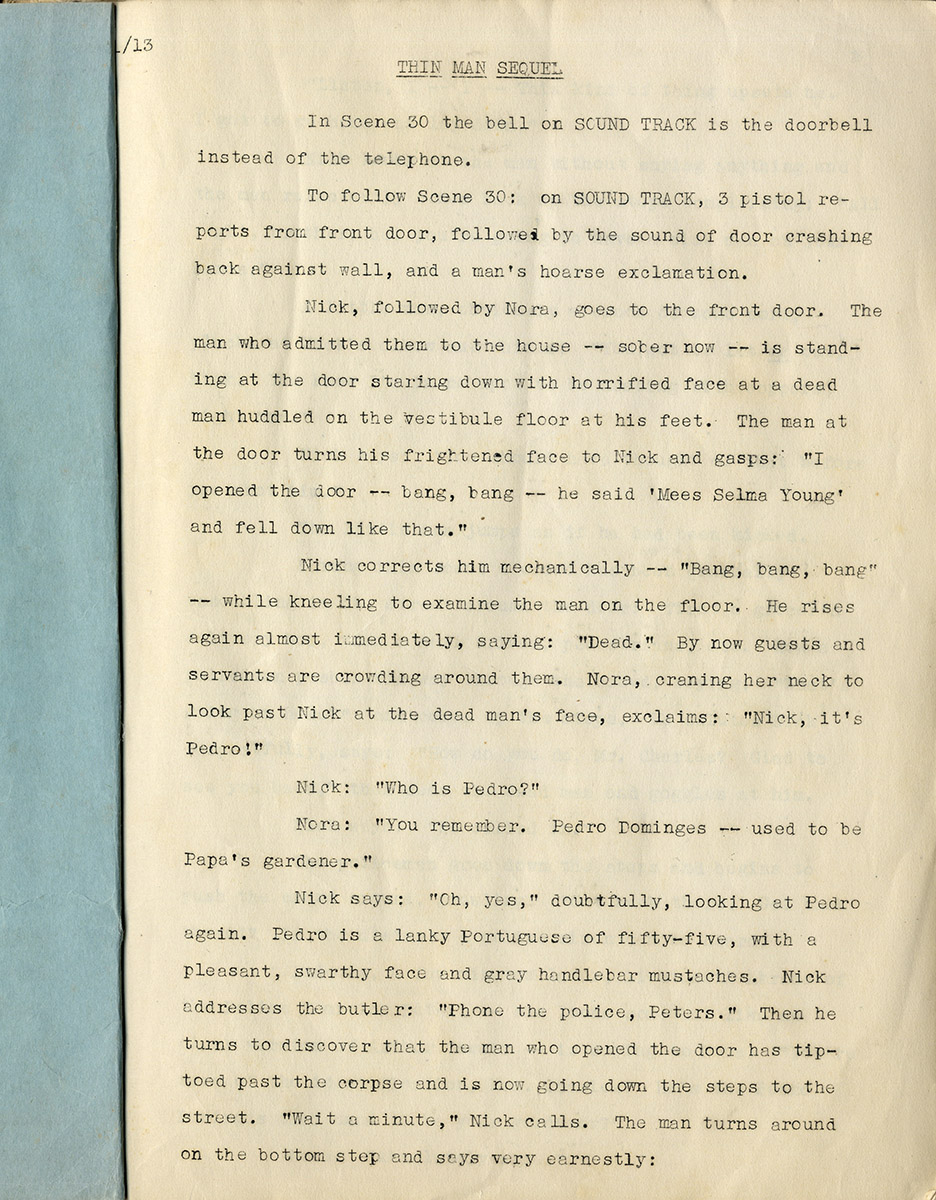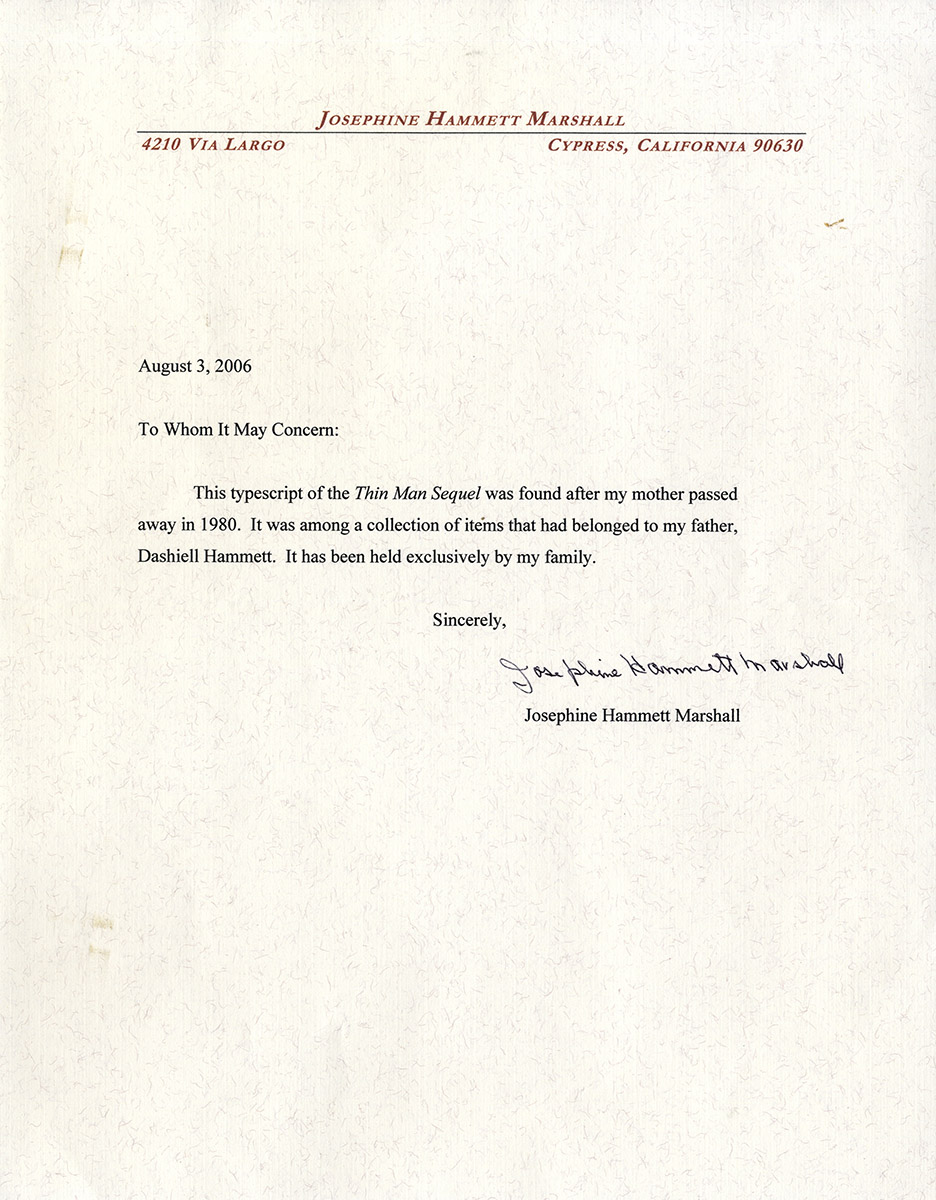Dashiell Hammett (screenwriter, source) THIN MAN SEQUEL (Sep 17, 1935) Film script
[Culver City, CA]: MGM, 1935. Vintage original film script, quarto, mimeograph. Light blue titled wrappers, with the white MGM studio label present, holograph pencil notation of Hammett’s name (secretarial), rubber-stamped COMPLETE, dated September 17, 1935, with a single credit for Hammett. 115 leaves, mimeograph duplication. Pages and wrapper very good+, bound with two gold brads. In a custom clamshell box.
With a single holograph correction by Hammett, and letter of provenance from Hammett’s daughter Josephine Hammett Marshall regarding the discovery of the treatment in the family’s estate.
An extremely scarce mimeographed script treatment by Dashiell Hammett for what became the first Thin Man sequel film, AFTER THE THIN MAN. This script was eventually published by Mysterious Press in 2012 under the title RETURN OF THE THIN MAN.
The first “Thin Man” film, released in 1934 and based on Hammett’s novel, was a smash hit and is today a key film in the American screwball comedy cycle. Five sequels were made between 1936 and 1947 (all starring the original acting team of William Powell and Myrna Loy), and this previously unknown attempt at a sequel by Hammett was clearly commissioned by MGM but never produced, making this script an entire unpublished Hammett work. The story is a completely original one, never reworked for the other films, very much written in Hammett’s trademark style and reading a bit more like a story treatment (i.e., a novel) than a final screenplay, which is likely as far as the story got on the road to production.
The piece is dated Sept. 17, 1935 at the lower right corner of the front panel, along with Hammett’s name, and Hammett’s name is noted in pencil next to the title label (though not in Hammett’s hand). There is only one single-word correction to the entire text, at page 83 in Hammett’s hand, where the word “compact” is replaced with “cigarette case.”
Accompanying the screenplay is a typed letter signed from Hammett’s daughter (who edited a recently published collection of Hammett’s letters), on her personal stationery, stating that the screenplay was discovered by Hammett’s wife in 1980, and that it had been a part of the family’s estate until that time. Probably one of only a tiny handful of copies that could have been produced, and the only one we are aware of having ever surfaced in the marketplace.
THE THIN MAN was the last of the five detective novels written by seminal crime author Dashiell Hammett (1894-1961). After the popular success of the 1934 MGM movie based on THE THIN MAN, starring William Powell and Myrna Loy as Nick and Nora Charles, Hammett was invited to write a sequel. Hammett’s 115-page original THIN MAN SEQUEL screen treatment–later adapted to the screen as AFTER THE MAN (1936) by screenwriters Albert Hackett and Frances Goodrich–and a treatment for a third film, ANOTHER THIN MAN (1939), would be Hammett’s last full-length fictional works. Neither were published during his lifetime.
In the original 1934 THIN MAN movie, director W.S. Van Dyke and married screenwriters Hackett and Goodrich took the plot and characters of Hammett’s novel, a mystery narrated in the first person by hard-boiled detective Nick Charles, and converted it into a husband-and-wife screwball comedy with a mystery plot line. Where in the novel, Nick’s wealthy wife Nora is essentially a sounding board, someone to whom Nick comes home and who serves him drinks, in the movie she is elevated to the role of co-equal crime-solving partner, and the humorous interactions of Nick, Nora, and their dog, Asta, become the movie’s point and its principal source of pleasure.
The character of hard-drinking Nick Charles was largely based on Hammett himself. Hammett had been a detective working for the Pinkerton agency prior to becoming a writer, and the relationship of Nick and Nora in the book was clearly inspired by Hammett’s real-life relationship with Lillian Hellman. (THE THIN MAN book is dedicated “To Lillian.”)
Director Van Dyke and screenwriters Hackett and Goodrich took fundamentally the same approach with AFTER THE THIN MAN as they had with THE THIN MAN. They took the mystery plot of Hammett’s THIN MAN SEQUEL screen treatment, polished it, and punched up its comic aspects to showcase the screen personalities of William Powell and Myrna Loy as Nick and Nora Charles.
Two drafts preceded this one. The project began with a thirty-four page screen story by Hammett submitted to the studio on January 8, 1935. This initial screen story, though it shares some characters and incidents with the later versions, was somewhat different from what eventually developed. The second draft, based on Hammett’s story, was a seventy-two page “temporary screenplay” written by Hackett and Goodrich, dated April 29, 1935.
The actual 115-page THIN MAN SEQUEL screen treatment by Dashiell Hammett, dated September 17, 1935, contains several references to the Hackett and Goodrich temporary screenplay. In fact, the treatment’s first line is a note referring to the H&G screenplay: “In Scene 30 the bell on SOUND TRACK is the doorbell instead of the telephone.” Although the movie (and its Hackett/Goodrich screenplay) has 15 minutes or so of Nick & Nora comedy material that precedes this sequence, this is where the mystery plot conceived by Hammett actually begins–with a doorbell, the sound of gunshots, and a dead body slumped against the Charles’s front door. (A few scenes later, Hammett comments, “When Nora arrives the girl is in the middle of a long description of a dress that can be written much more accurately by Miss Goodrich than by Mr. Hammett.”)
The body outside the front door is that of Pedro, one of Nora’s family’s gardeners, whom Nora hasn’t seen in six years. Shortly afterwards, Nora receives a telephone call from her cousin Selma Landis who is frantic because her ne’er-do-well husband, Robert, has been missing for several days. Naturally, these two events will turn out to be related. The treatment’s first scene also introduces us to Lt. Abrams, a Jewish homicide detective who will be played in the movie by Sam Levene.
After a scene in which Lt. Abrams interviews Nora’s and Selma’s family–including the “old battle-axe” Aunt Katherine–the next major sequence in the treatment takes place in the Li-Chee nightclub. There we are introduced to Selma’s unfaithful husband, Robert, and his girlfriend, Polly, a nightclub singer. Robert has made a deal with Selma’s former beau, David Graham, to get out of Selma’s life permanently–in exchange for a large sum of money, of course–so that David can have Selma for himself. Dancer, the nightclub’s owner, who wants a cut of Robert and Polly’s shakedown, catches Phil, a young man Polly says is her brother, listening at her door and pushes him downstairs–just as Nick and Nora are entering the club. (In the movie, but not this treatment, all of these events take place on New Year’s Eve.) Nick and Nora are surprised to find the missing Robert at the club. Dancer asks them, “Is he a friend of yours?” Nick replies, “On the contrary, a relation.”
Robert returns briefly to his wife Selma’s apartment and after leaving the apartment is shot dead. This is the story’s principal murder, and for a while Selma is the principal suspect. As it turns out, most of Hammett’s treatment was used in the completed film. Many scenes play out close to the way Hammett wrote them, including a short, highly cinematic montage sequence showing what each of the chief suspects is doing immediately before Robert’s murder. A subsequent scene with Nick and Nora in Dancer the nightclub’s owner’s office was filmed almost exactly as Hammett wrote it, jokes and all.
The screen treatment is filled with Hammett-style wisecracks, not all of which were used in the movie. When Dancer, the nightclub owner, tells Nick, “I want to apologize for losing my temper like that,” Nick responds, “Don’t give it a second thought. Some people lose one thing, some lose another, but they all like a drink afterwards.” Later, when red hairs from a wig are found at the scene of a crime, Lt. Abrams asks Dancer, “Did you ever wear a wig?” and Dancer replies, “No, but you ought to see my collection of hoop skirts.”
A few brief scenes in Hammett’s treatment do not appear in the film–a scene where Polly the nightclub singer unsuccessfully attempts to seduce Nick; a scene where Selma’s psychologist, Dr. Kammer, forces her to take some sleeping pills; a scene where wealthy Aunt Katherine calls a newspaper editor, a general, and then the mayor of San Francisco to get them to hush up the story (“I’m sure poor Robert was killed by a robber“). In the climactic scene where the murderer is revealed, Hammett adds a gag involving the dog Asta urinating against a chair! (This and other urination gags were omitted from the film due to objections by the Breen office.)
One of the movie’s funnier screwball bits comes directly from Hammett’s treatment–someone throws a stone through Nick and Nora’s window with a note attached to it, but Asta grabs the stone and chews off part of the note before the couple are able to read it.
The case’s turning point occurs when Nick and Lt. Abrams discover headphones and a microphone beneath the floorboards of the apartment immediately above Polly’s. Some unknown party, a blackmailer using the name Anderson, has rented the room above Polly’s and has been secretly listening in to everything that goes on below. Nick asks Lt. Abrams to gather all the suspects together in Polly’s apartment where he intends to identify the murderer. Which, of course, he does.
There are a number of significant differences between Hammett’s screen treatment and the movie that was made from it. The events of the first quarter hour of the AFTER THE THIN MAN movie–in which Nick and Nora arrive by train in San Francisco and are met by reporters asking about the previous “thin man” case; in which we see Asta with “Mrs. Asta” and her puppies; in which Nick and Nora attend a dinner party held by Aunt Katherine and have to interact with a lot of tedious elderly relatives–are not in Hammett’s treatment and appear to be entirely the work of screenwriters Hackett and Goodrich. The movie adds a specific timeframe with all of the significant events occurring around the beginning of the New Year (just as all the events in the previous THIN MAN movie occurred around Christmastime). This allows Hackett and Goodrich to add a number of gags involving Nick and Nora and the drunken New Year’s Eve revelers at the Li-Chee nightclub. Although Hammett’s treatment begins with the murder of Pedro the gardener, in the movie Pedro is the third person to be killed well after the story is underway. Hammett’s treatment ends with Nick’s revelation of the murderer. Hackett and Goodrich add a coda in which Nick and Nora are returning to New York via train, and Nora announces that she is pregnant.
Hammett’s THIN MAN SEQUEL screen treatment reads more like a novel than a screenplay. It shows that Hammett was as much, if not more, the author of the AFTER THE THIN MAN movie as anyone, having provided the characters, the ingenious plot, and a substantial portion of the movie’s dialogue.
Differences Between Hammett’s September 17, 1935, Screen Treatment and its Published Version
51 years after his death in 1961, Dashiell Hammett’s original screen treatments for AFTER THE THIN MAN and ANOTHER THIN MAN were finally published in a collection entitled RETURN OF THE THIN MAN (The Mysterious Press, 2012).
As previously noted, Hammett’s treatment–the actual mystery plot–begins after approximately 15 minutes of introductory comedy material written by Hackett and Goodrich. According to Hammett’s granddaughter, Julie M. Rivett, the published version of Hammett’s THIN MAN SEQUEL/AFTER THE THIN MAN incorporates the Hackett and Goodrich material “according to his own instructions.” Thus, the first 10 pages of the published version is all Hackett and Goodrich, not from the movie, but from their first “temporary screenplay” dated April 29, 1935, to wit, Nick and Nora’s return to San Francisco from New York via train; reporters and acquaintances meeting Nick and Nora at the train station; a scene with Asta, Mrs. Asta and her puppies; and Nick and Nora’s arrival home as unrecognized guests at their own surprise party.
Thereafter, the published version is word-for-word identical to Hammett’s September 17, 1935 screen treatment, beginning with the murder of Pedro the gardener, and ending after the revelation of the murderer with Lum Kee, one of the owners of the Li-Chee nightclub, standing in a puddle left by the urinating Asta.
Out of stock
Related products
-
![(Blaxploitation film) BLACK BELT JONES [1974] Film script by Oscar Williams](https://www.walterfilm.com/wp-content/uploads/2024/06/BlackBeltJonesSCR_a-540x693.jpg)
(Blaxploitation film) BLACK BELT JONES [1974] Film script by Oscar Williams
$750.00 Add to cart -
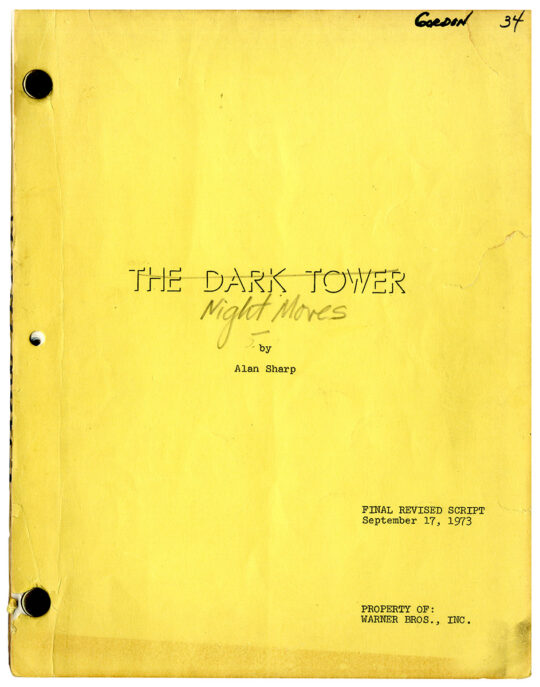
Arthur Penn (director) NIGHT MOVES [working title: THE DARK TOWER] (Sep 17, 1973) Final revised film script
$2,000.00 Add to cart -
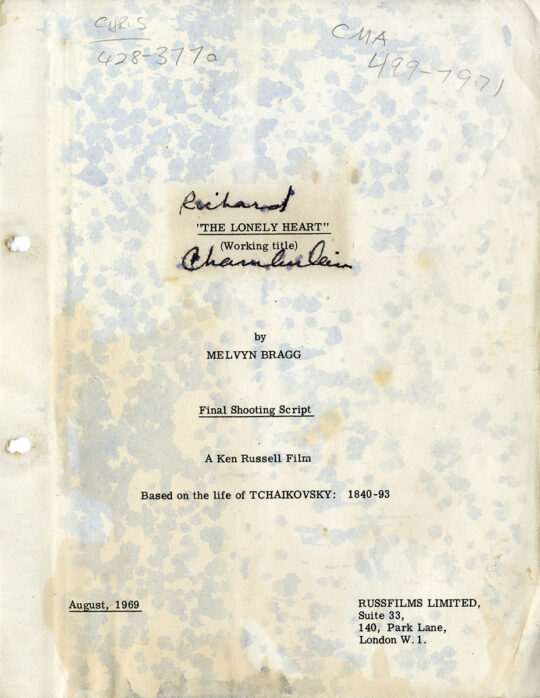
Ken Russell (director) THE MUSIC LOVERS [working title: THE LONELY HEART] (1969) Final shooting script
$3,000.00 Add to cart -
![ESCAPADE [working title for: A WARM DECEMBER] (Jun 11, 1971) Revised First Draft screenplay](https://www.walterfilm.com/wp-content/uploads/2021/04/EscapadeSCR_a-540x695.jpg)
ESCAPADE [working title for: A WARM DECEMBER] (Jun 11, 1971) Revised First Draft screenplay
$500.00 Add to cart

